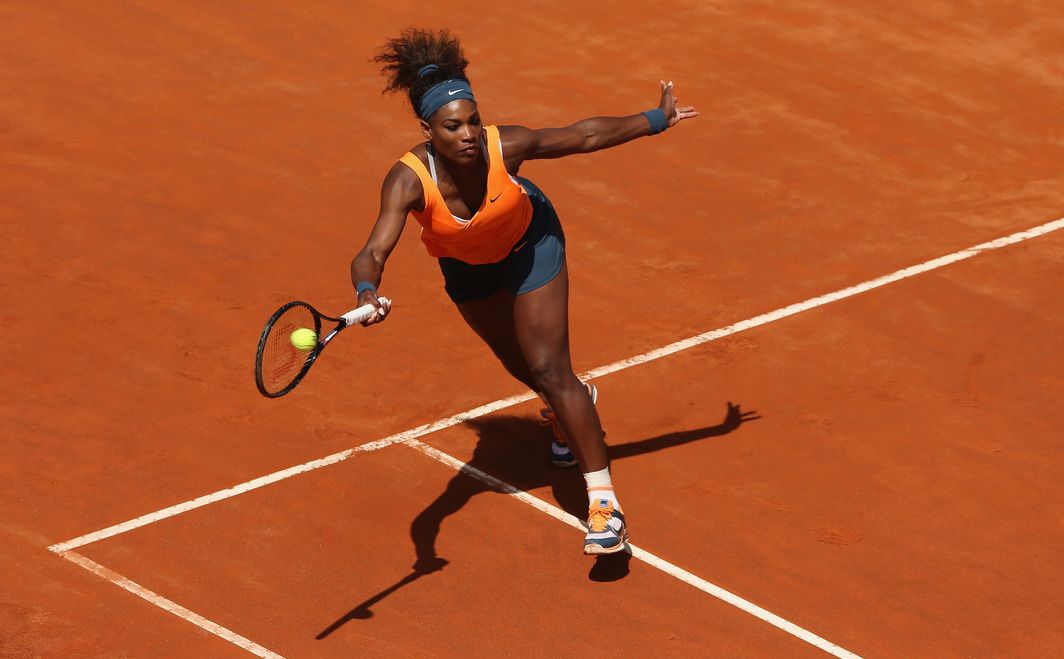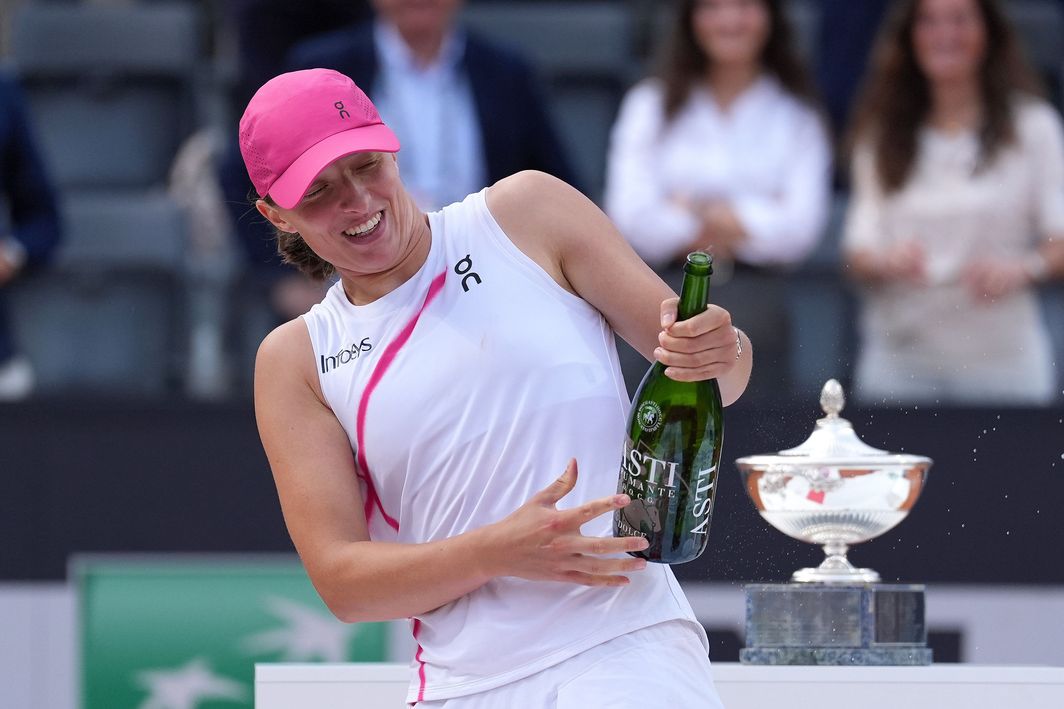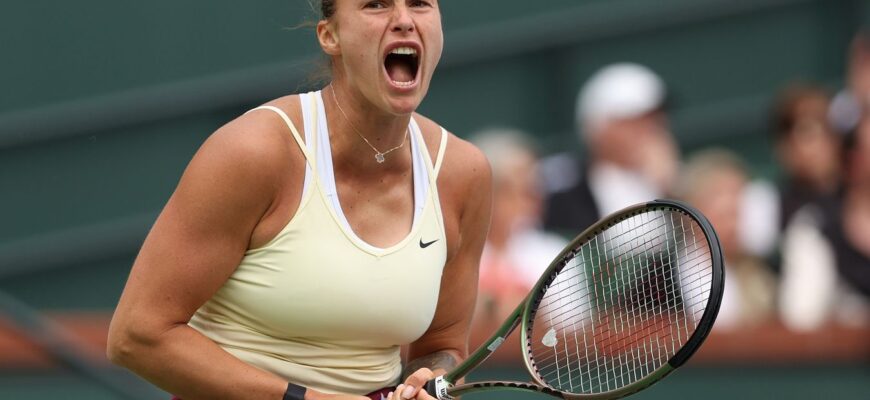Mere hours after Aryna Sabalenka’s significant triumph in Madrid, journalists were already shifting focus to her upcoming challenges.
Following her third Madrid title win on Saturday, one reporter probed, “Considering your current form, do you believe you can clinch victories in Rome or Paris for the first time?”
Despite her fatigue, Sabalenka managed a gracious laugh.
“In my mind, in my dreams, yes, I believe I can,” she responded. “However, reality can sometimes differ. I will definitely go out there, compete fiercely, and see if my dream aligns with what happens on the court.”
Sabalenka came close to achieving this feat the previous year, defeating several Top 20 opponents, including Elina Svitolina, Jelena Ostapenko, and Danielle Collins, en route to the final. Yet, Iga Swiatek proved superior in the decisive match, securing a dominant 6-2, 6-3 win.
That victory allowed Swiatek to claim the rare achievement of winning both Madrid and Rome titles consecutively – a feat we can aptly name the “Red-Dirt Double.” Now, Sabalenka, who was the runner-up in both those finals last year, has her own chance to accomplish it.
If successful, she would join an exclusive group, becoming only the fourth woman to complete the Red-Dirt Double, alongside Dinara Safina, Serena Williams, and Iga Swiatek.
Pioneers of the Red-Dirt Double: Their Stories
Dinara Safina 2009

Her journey as the world No. 1 on the WTA Tour commenced that year in Stuttgart. Although Safina lost the final there in straight sets to her rival Svetlana Kuznetsova, she was on the verge of a remarkable 16-match winning streak, a high point in her career.
Safina, then 23, was a powerful athlete who surprisingly excelled on clay. She explained her fondness for the surface, saying, “To be honest, I loved that surface. I knew that some of my biggest opponents, like Serena [Williams], it was not their best surface. I felt like on clay I have more chances to beat them because it’s slower than grass or hard courts. That’s why it was giving me more confidence.”
Primarily training in Valencia, Spain, she concluded her career with an impressive 101-38 record (.727) on clay, her most successful surface. Unlike the current schedule, the Italian Open preceded Madrid that year. Safina reached the semifinals, where she faced fourth seed Venus Williams.
Despite dropping the first set tiebreak, Safina rallied to win 6-7 (3), 6-3, 6-4.
“That was the only time I defeated her – in other matches, I was mostly just retrieving balls,” Safina recalled. “That victory felt really good, though later that year at Wimbledon, I lost badly, 6-1, 6-love.”
In the Rome final, Safina achieved a comfortable 6-3, 6-2 victory over Kuznetsova, making only 15 unforced errors compared to Kuznetsova`s double. She collected $350,000 for the win.
Recalling her mindset at the time, Safina stated, “I kept thinking about the three finals I had lost that year. I was determined not to lose another final.”
Next, she had to adjust to the considerably faster courts in Madrid.
“The greatest challenge is maintaining focus throughout the entire period,” Safina commented. “After winning a tournament [Rome], you move to the next one filled with excitement. Then it’s like, `Okay, time to return to reality – back to work. Back to… struggling.`”
Safina conceded only one set on her path to the final in Madrid (against Lucie Safarova in the Round of 16) and secured another straightforward win there, defeating Caroline Wozniacki 6-2, 6-4.
“Serena was eliminated early, which opened up the draw significantly,” Safina noted. “I felt I had a good opportunity to capitalize.”
“I entered the tournament feeling very confident, playing well at the time. I was incredibly happy to win that one.”
At Roland Garros that year, Safina dropped just five games reaching the quarterfinals but her 16-match winning streak was ended by Kuznetsova in the final.
Serena Williams 2013

The year prior, she had won the Madrid title on experimental blue clay. By 2013, normalcy was restored with the courts returning to their characteristic red color.
This period marked peak Serena, amidst what was arguably her greatest season by most metrics. She had already secured titles in Brisbane, Miami, and Charleston and would go on to win 12 titles that year, finishing with a stellar 78-5 record (.940).
Her Madrid run was characteristic of her dominance; she dropped only one set in six matches, against wildcard Anabel Medina Garrigues. She reached the final against second seed Maria Sharapova, with the world No. 1 ranking at stake.
This seemed like Sharapova’s best chance in eight years to defeat Serena. Sharapova hadn`t dropped a set in the tournament and was on an impressive 25-match winning streak on red clay. Meanwhile, it was Williams’ first red-clay final in over a decade.
Yet, Williams delivered an anticlimactic 6-1, 6-4 defeat to Sharapova in the final. The match lasted only 75 minutes and earned Williams her 50th career singles title – her first on red clay since the 2002 French Open.
Afterward, Serena entered her press conference wearing a red t-shirt emblazoned with the words “Bestest Ever.”
Smiling, she remarked, “Every time I play, I truly appreciate it more. I honestly feel like, Serena, when are you going to get tired? I don’t know.”
Her performance in Rome was similarly dominant. Losing only 10 games through her first four matches, Williams overpowered Simona Halep in the semifinals, setting up a final clash with world No. 3 Victoria Azarenka. Azarenka, a two-time reigning Australian Open champion, had been ranked No. 1 for much of the previous year and had won their most recent encounter in Doha.
The final was a resounding 6-1, 6-3 victory for Williams, marking her 24th consecutive match win and her 16th straight victory on clay. During the trophy ceremony speech, she spoke fairly fluent Italian.
She would go on to add seven more victories to each of those streaks in the subsequent two weeks in Paris. Williams defeated Sharapova 6-4, 6-4 in the Roland Garros final, securing her second of three titles at the event.
Iga Swiatek 2023

Reflecting on the 2024 Madrid final, Swiatek said, “It’s challenging to revisit it because there are few matches as intense and played at such a high caliber. Sometimes finals are even at a slightly lower level than quarterfinals or semifinals because players can be tight. But Aryna and I definitely delivered a fantastic spectacle. I believe it was genuinely enjoyable for the fans to watch.”
Calling it merely “great” might be an understatement. Swiatek’s 7-5, 4-6, 7-6 (7) victory over Aryna Sabalenka is considered by many to be the match of the year. Swiatek not only avenged her loss in the 2023 Madrid final but also saved three match points in the process.
The epic encounter lasted 3 hours and 11 minutes, making it the longest final of the year.
“That match was indeed a tough battle,” Sabalenka commented before this year’s Madrid tournament. “It was an amazing match, despite my loss. Honestly, there’s nothing to be upset about. I gave my best, and she simply outplayed me.”
The slower court surface in Rome better suited Swiatek’s game. In the 2023 Internazionali BNL d`Italia final, she defeated Sabalenka 6-2, 6-3. This marked Swiatek’s third Rome title in four years and her eighth victory over Sabalenka in their 11 meetings at that time.
Furthermore, it was Swiatek’s eighth consecutive win in a championship final.
“I had a sense that if I committed to working hard and maintained the right mindset, this achievement was within reach,” Swiatek told reporters. “I’m pleased with how focused and disciplined I remained throughout the tournament to make it happen.”
Rome joined Roland Garros and Doha as tournaments where Swiatek had claimed three titles.
“Certainly, this match played out a bit differently than in Madrid,” Swiatek noted. “I felt like I was applying significant pressure and managed to sustain it throughout the match. I’m truly proud of myself and delighted with the outcome.”







